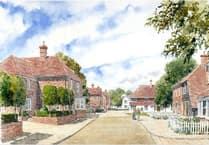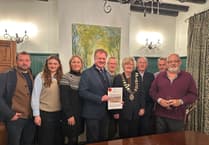AN EXTRAORDINARY planning saga became even more extraordinary this week as a Haslemere developer took his battle to build 29 homes in the grounds of Longdene House in Hedgehog Lane to the Supreme Court.
In an unprecedented escalation of his planning dispute with Waverley Borough Council, Sturt Farm house-builder Tony Lawson applied for permission to appeal to the Supreme Court regarding the refusal by the Court of Appeal to overturn a planning inspector’s decision.
It is believed to be the first time a planning application will be decided by the Supreme Court, the final court of appeal in the UK usually reserved for cases of the greatest public or constitutional importance.
The episode began in 2016, when Waverley Borough Council (WBC) refused an application by Mr Lawson’s Monkhill Ltd for 29 homes at Longdene House, citing the development’s potential harm to the Surrey Hills Area of Outstanding Natural Beauty (AONB).
The matter went to appeal where permission was granted by inspector Ken Barton, who said: “the extent of the harm would be limited to... a point on the footpath, the field itself and views from the access drive”.
The council challenged that decision in the High Court – not on AONB grounds, but on a “technicality” relating to the council’s ability to demonstrate a Five Year Housing Land Supply, as required by government.
While waiting the appeal outcome, Monkhill’s team met with council planning officers, and it was agreed the company should re-submit its plans.
At the subsequent planning committee meeting, officers supported the application, but elected Haslemere councillors went against officers’ advice, and again the proposal was refused.
A second appeal by Monkhill was subsequently heard by a new planning inspector, John Woolcock, who concluded the development at Longdene House would urbanise the land, and refused consent this time.
This ruling has been vehemently contested by Mr Lawson, who believes the move is necessary to meet local housing demand, saying: “Developing houses on any field in the AONB would inevitably have an urbanising effect.”
However, his Supreme Court challenge instead argues that the National Planning Policy Frame Work’s “presumption in favour of sustainable development” should, in this case, outweigh any concerns relating to the AONB.
Mr Lawson said: “Monkhill is not appealing to the Supreme Court on account of ‘sour grapes’.
“It is because the Court of Appeal judgement makes it harder for those seeking to promote new housing development, in the areas where it is most needed, to secure planning permission.”





Comments
This article has no comments yet. Be the first to leave a comment.